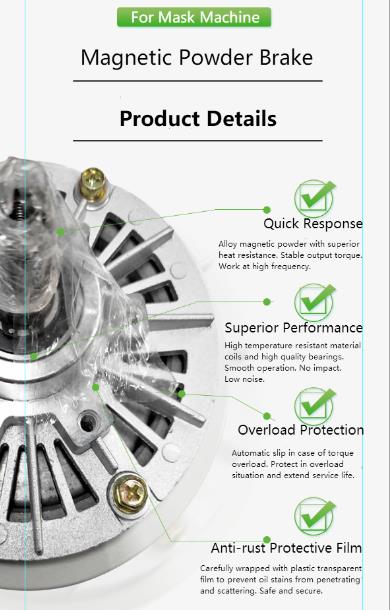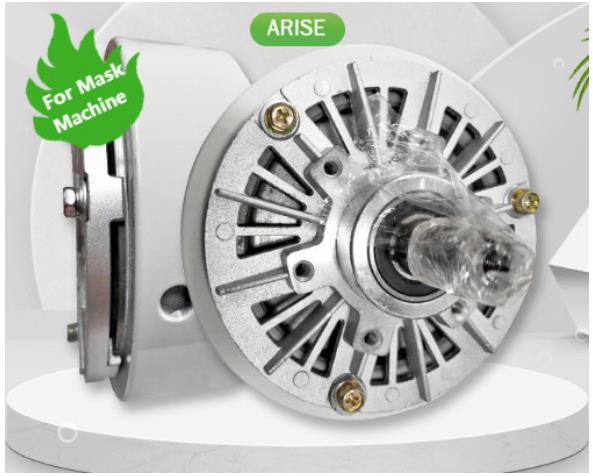A magnetic powder brake is a friction brake employing electromagnetic principles to control torque or speed in rotating machinery. This article explores the structure and operation of magnetic powder brakes, their types, applications, maintenance, troubleshooting, and future development trends.
1. Structure of Magnetic Powder Brake:
A standard magnetic powder brake comprises two key components: the input rotor (field rotor) and the output rotor (armature rotor), separated by a small air gap. The driving shaft connects to the input rotor, and the load is attached to the output rotor.

2. Magnetic Powder Filling:
The space between the input and output rotors is filled with a thin magnetic powder suspended in a carrier fluid, often composed of iron or iron-based compounds. This powder facilitates torque transmission.
3. Electromagnetic Coil:
An electromagnetic coil surrounds the input rotor, generating a magnetic field when powered. The current passing through the coil creates a magnetic field in the air space between the two rotors.
4. Magnetic Particle Alignment:
The electromagnetic coil aligns iron particles in the magnetic powder with the field lines, creating bridges across the air gap, connecting the input and output rotors.
5. Torque Control:
Operators can control torque precisely by adjusting the input current to the electromagnetic coil. Increased current strengthens the magnetic field and transmitted torque, while decreased current weakens the magnetic field.
6. Torque Limitation:
Magnetic powder brakes offer the advantage of limiting maximum torque, preventing overloading or sudden torque spikes.
7. Slip and Speed Control:
These brakes can control slip and speed by adjusting the coil current, regulating the speed difference between the input and output rotors.
Types Of Magnetic Powder Brake:
Magnetic powder brakes are categorized into hysteresis and eddy current types, each with distinct operating principles related to ferromagnetic and conductive particles.
Wide Applications Of Magnetic Powder Brake:
Used in printing presses, wire drawing machines, web tension control systems, automotive and aerospace industries, and medical imaging equipment for MRI.

Maintenance And Troubleshooting Of Magnetic Powder Brake:
Maintenance:
Regular inspection for wear and damage.
Cleaning to eliminate dust and debris.
Lubrication with compatible lubricants.
Adjustments using a controller to regulate magnetic field intensity.
Troubleshooting:
Adjusting magnetic field strength.
Inspecting for worn or damaged components.
Reducing the load on the brake.
Development Trends of Magnetic Powder Brake:
Energy from Renewable Resources:
Control speed in wind turbines to optimize energy output and reduce wear.
Robotics:
Used for precise control of joint and limb movement in robotic systems.
Medical Science and Technology:
Provides adjustable resistance or support in medical devices like prosthetics and exoskeletons.
Aerospace:
Developing applications to control aircraft control surfaces, such as flaps and rudders.
Conclusion:
Understanding the structure, operation, and diverse applications of magnetic powder brakes is crucial for their effective utilization. As technological advancements continue, these brakes are expected to play a pivotal role in various industries, contributing to enhanced efficiency and control in rotational machinery.







Comments (0)